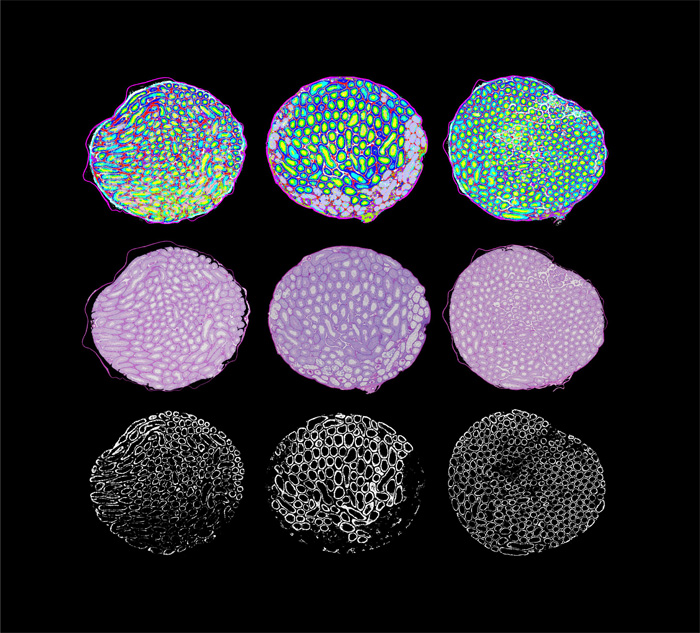Fascinating discoveries sometimes emerge from the most daunting of experimental roadblocks. Designed to generate over 1,000 recombinant inbred mice lines for genetic mapping, the Collaborative Cross (CC) project unearthed astounding variation in male fertility when nearly 95% of the highly inbred CC lines went extinct. As part of the Multiparental Populations series in the June issue of GENETICS, Shorter et al. use these fortuitous results to map the genetic variation underlying differences in male fertility and other reproductive traits. Their findings suggest the infertility in these lines is caused by genetic variants distributed across the genome, revealing incompatibilities between subspecies.
The CC project was designed as a powerful genetic mapping population consisting of thousands of highly inbred lines that are extremely genetically different from each other. The population founders came from several common varieties of lab mice, as well as wild-derived animals representing the three mouse subspecies. All of these lines were crossed to incorporate as much genetic variation in the population as possible. The hybrid offspring were then inbred to create high homozygosity within a line. As the lines became more and more inbred, something unexpected began to happen.
From the start, the collaborating research teams agreed they would not undertake “heroic” efforts to save lines that were struggling to persist due to high mortality or low reproduction. This policy changed as the CC lines began to go extinct at an alarming rate. In the end, 95% of the CC lines were lost despite the efforts of researchers to maintain them through between-line crosses and male fertility testing. Although some extinctions are expected as the hidden phenotypes of deleterious alleles are progressively revealed by inbreeding, the number observed far exceeded these expectations.
The culprit behind this perplexing mouse mass extinction was male infertility; nearly half of the failed lines included males that were unable to sire offspring. This gave the authors an opportunity to turn lemons into lemonade: they decided to map male reproductive traits to identify the underlying genetic basis of the problems in the extinct CC lines. They found that the contribution of the X-chromosome and the autosomes to the genomes of the extinct lines was different, with the extinct lines showing a deficit in X-linked haplotypes from the wild-derived founders. This suggests selection against retaining wild alleles at X-linked genes during the inbreeding process. Looking more closely at the extinct lines, they found very high variability in sperm count, sperm motility, and reproductive organ weights. They performed QTL mapping on fertility and reproductive traits using the extinct CC lines and identified several loci across the genome associated with variation in reproductive phenotypes. One identified locus on the X-chromosome contained a region previously identified as affecting hybrid incompatibility and speciation.
They also found that the majority of haplotypes associated with infertility and poor reproductive traits came from the wild-derived founders of different subspecies than common lab mice. It seems that genetic incompatibility between these distinct subspecies causes male infertility and reproductive isolation. Indeed, the surviving CC strains were found to have a deficit of genetic contributions from these founders across their entire genome.
The wild-derived mice were meant to provide as much genetic variation as possible to the CC lines, but this variation has turned out to be a double-edged sword. The crossing scheme between these diverged subspecies created new genetic combinations that disrupted male reproduction—often one of the first processes to be affected during speciation. Although the line extinction was unplanned and unwanted, it also provided a unique opportunity to dissect the genetics of male reproduction and the early stages of species isolation in mammals.
CITATION
John R. Shorter, Fanny Odet, David L. Aylor, Wenqi Pan, Chia-Yu Kao, Chen-Ping Fu, Andrew P. Morgan, Seth Greenstein, Timothy A. Bell, Alicia M. Stevans, Ryan W. Feathers, Sunny Patel, Sarah E. Cates, Ginger D. Shaw, Darla R. Miller, Elissa J. Chesler, Leonard McMillian, Deborah A. O’Brien, and Fernando Pardo-Manuel de Villena
Genetics June 2017 206: 557-572













